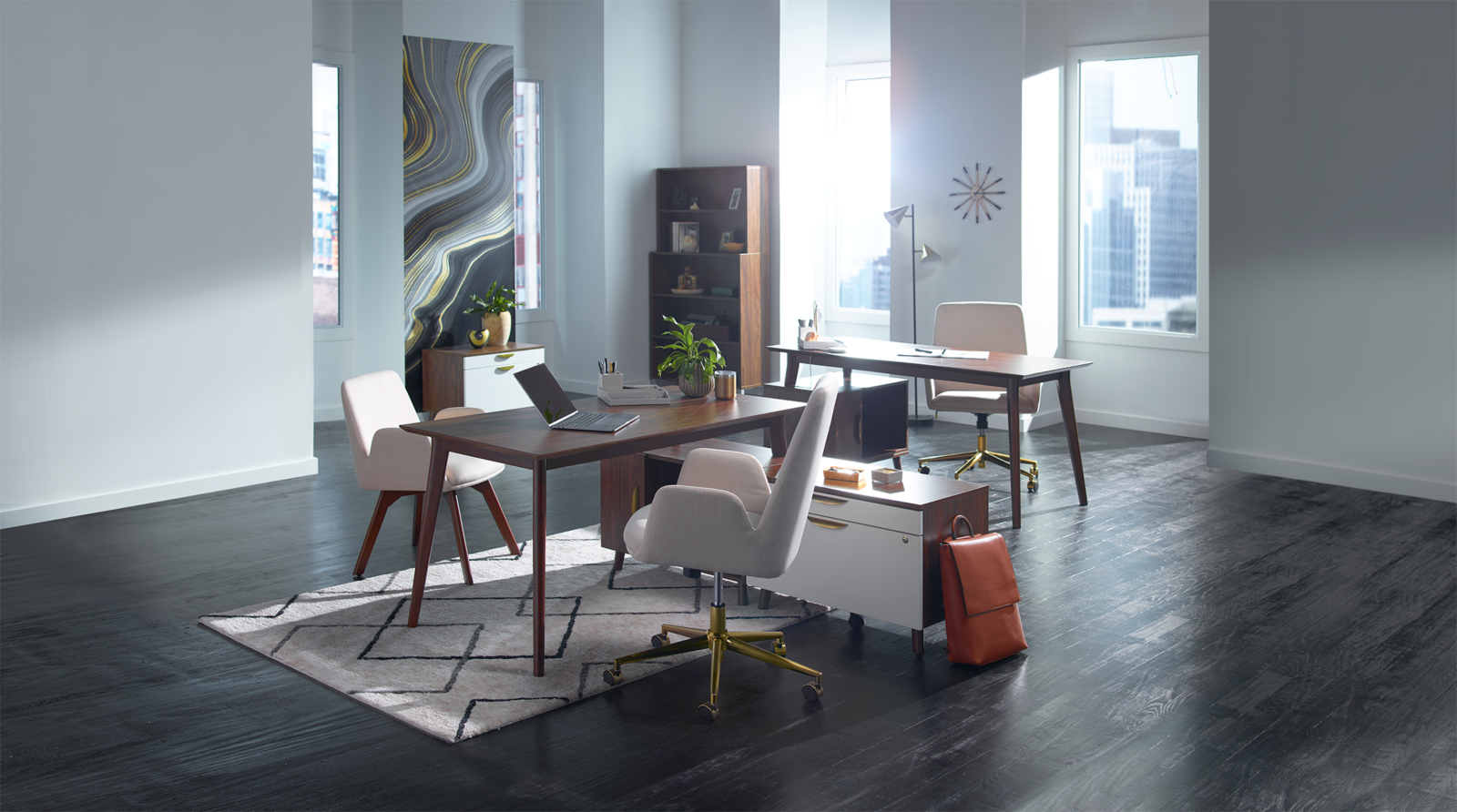
DESIGNING UNION & SCALE FOR STAPLES INC.
Designs for three collections of office furniture and their brand positioning strategy.
One of the strategic pillars of the Staples Inc. brand portfolio is a continued focus on their furniture business, specifically contract furniture. In order to build a brand that resonates more deeply with customers than the current Staples Brand, the existing heritage assortment was painstakingly analyzed, reimagined, and reworked until it became the launching point for what eventually became Union & Scale.
Role
Design manager
The team design consisted of 2-3 industrial designers and we worked very closely with merchandising, marketing, leadership, external consultants, brand management and manufacturers.
Outcome
The brand made it through from conceptualization to realization and launched in 2019 with big plans for growth. It will be an anchor point for the future of the Staples Brands portfolio.
Project Type
Brand Strategy Furniture Design
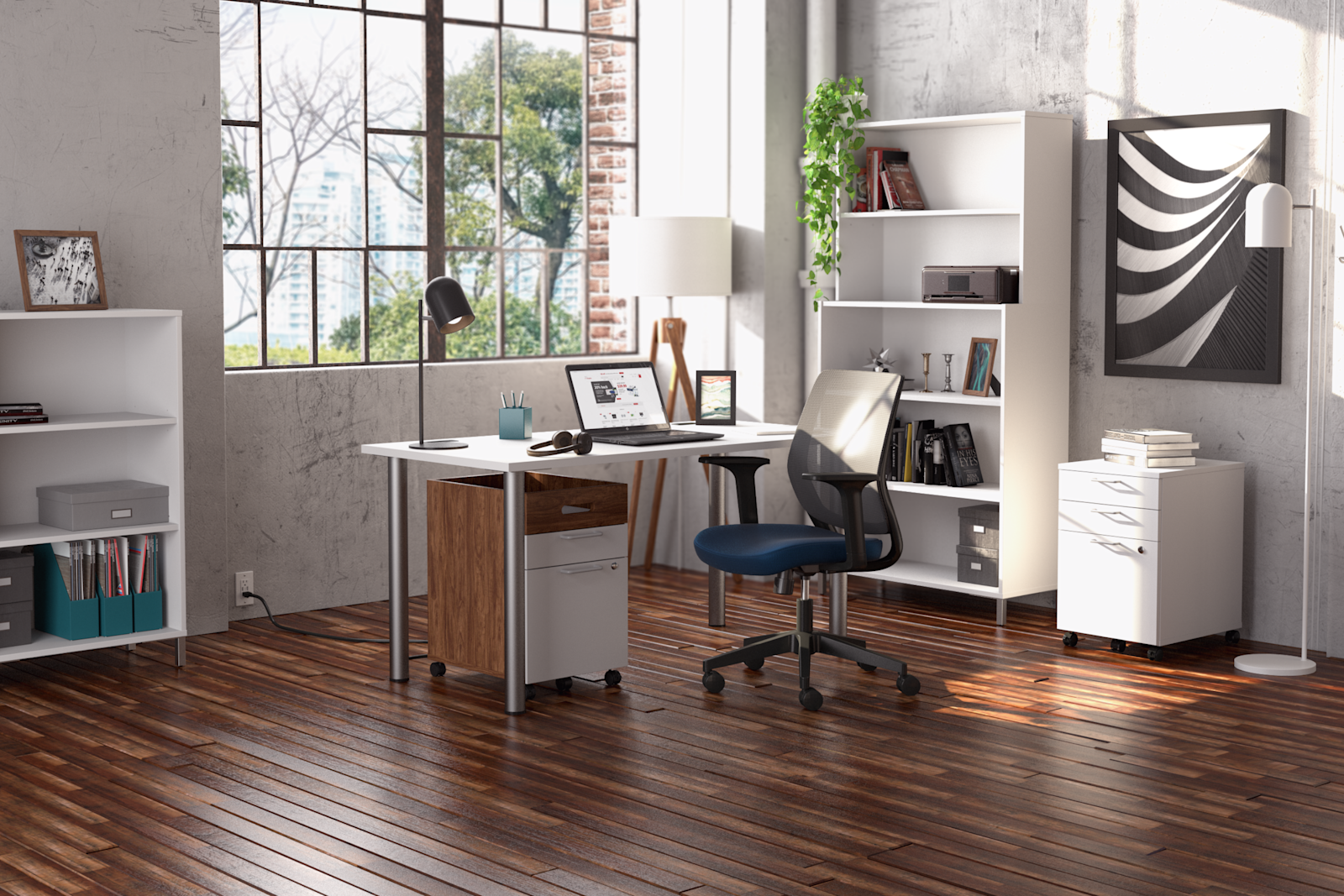
VISUALIZING LINE LOGIC TO CREATE A MORE THOUGHTFUL ASSORTMENT STRATEGY
We began the project by understanding the existing heritage assortment of furniture which consisted mostly of office chairs [Fig 1]. The current products were mismatched and lacked any intentional brand messaging. To try to understand and visualize the current assortment, we created a matrix that allowed us to group chairs by their aesthetics. When we do this, we can see areas where the assortment is over-indexed and areas where we are completely lacking. From here we have a powerful tool to work with business teams and leadership to discuss how we want our customers to view our assortment. We uncovered 5 groupings that were a clear reflection of the heritage of the Staples brand furniture. This became the foundation of the collections for a whole new brand of furniture, Union & Scale.

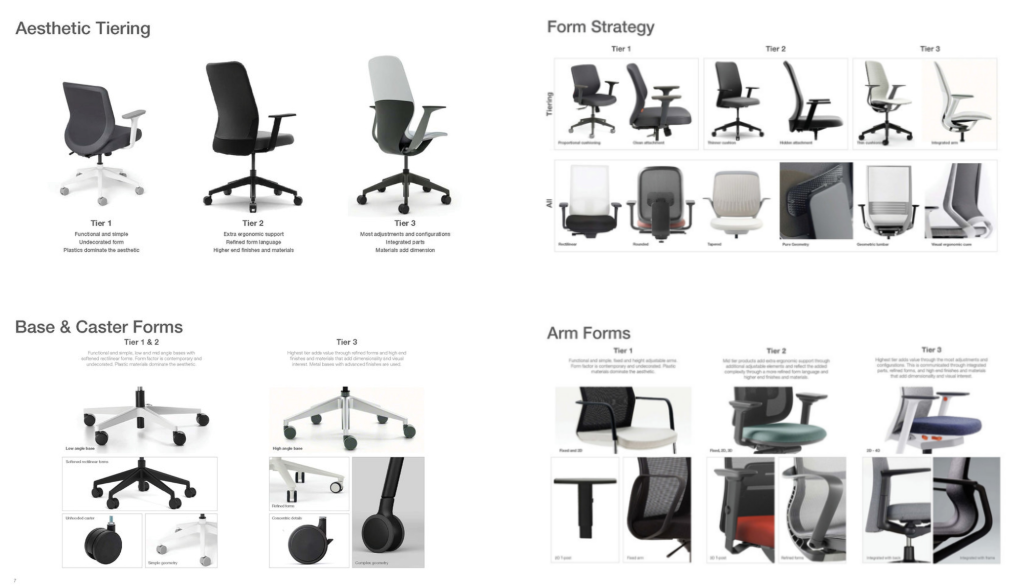
To bring order to the chaos and become educated on best-in-class brands we did research to benchmark what other companies were doing in the office furniture market [Fig 3]. We visualized some key themes around how components, materials, and finishes help to communicate the design value (and corresponding price point).
With this information, we proposed a methodology to consolidate components, materials, and finishes for our furniture assortment. This would help to provide the foundation for a more structured assortment. In addition, it provides benefit to the entire manufacturing process by giving opportunity to streamline raw materials, components, and manufacturers [Fig 2].
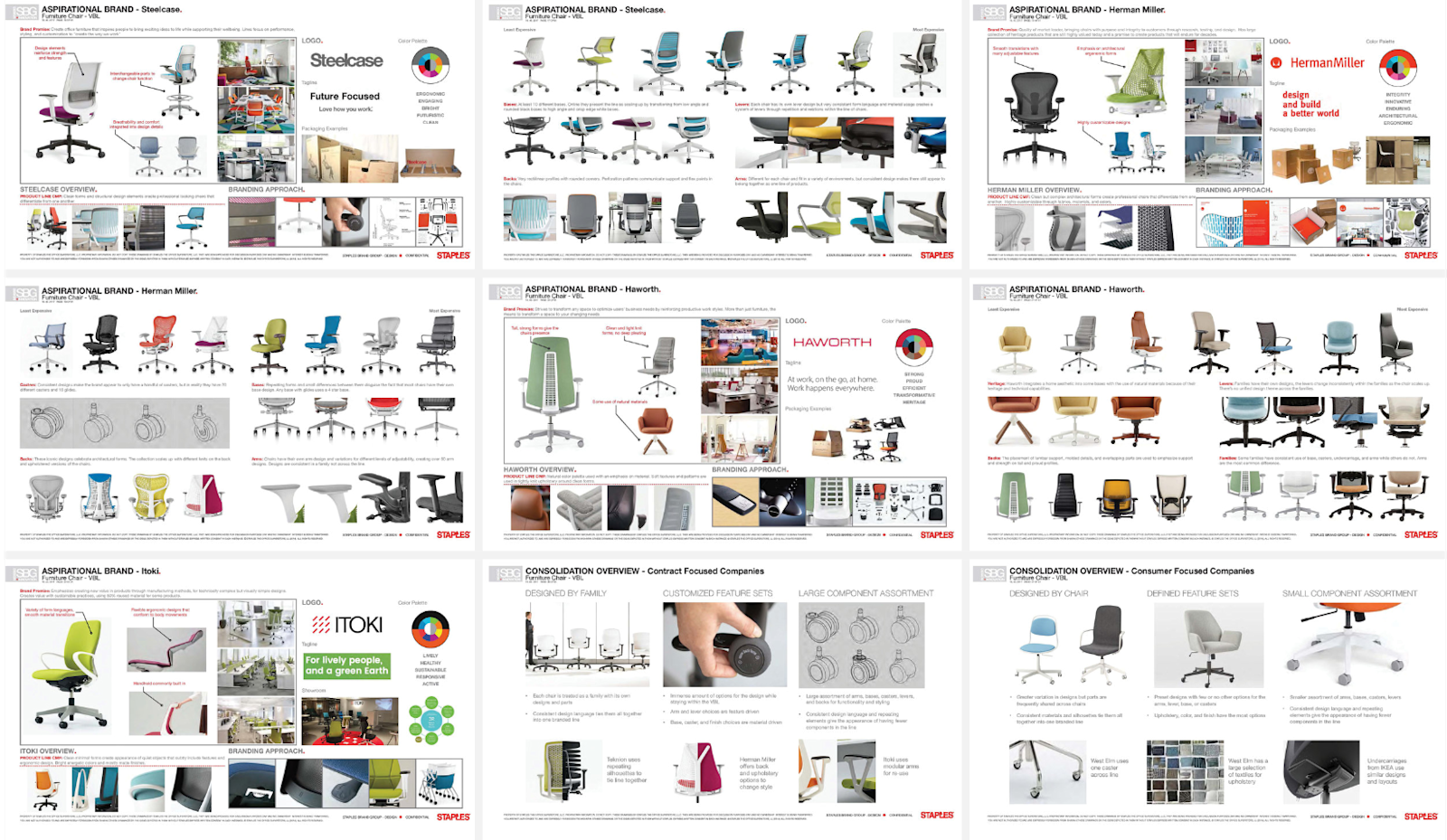
Union & Scale is intended to reflect the current workplace trends of flexibility, modularity, and reconfiguration. The products needed to embrace these traits physically; not only in the way that they function individually, but also the way that they function together beyond the intentionally designed collections.
ALIGNING WITH BRAND STRATEGY USING TREND FOCUSED COLLECTIONS
The design team was tasked with aligning product collections with the brand pillars and ensuring that there was an appropriate breakdown of products for different customer segments between retail and B2B. We prioritized the development of collections based on their projected value. The basic collections were developed first along with one of the collections that would begin to fill the need for more trend focused customers. The Union & Scale brand was created to align with high level workplace trends and translate them appropriately for the future Staples customer base. The one word essence of the brand, harmony, is related on a high level to work-life balance, and on a smaller level, to the relationship that workers have with their workspace everyday. To create harmony within a space, the design team focused on creating objects that would function alone, together, or in any combination between collections. This creates versatility for customers with a more consolidated assortment. In order to do this, we created a succinct palette of colors, materials, and finishes and combined them in different ways to create the core aesthetic of each collection.

DESIGN
Three collections were designed and released to correspond with the launch of the brand. The design process was primarily influenced by the brand research and alignment strategy. Objects were designed to fill the clear gaps within in the assortment and provide a foundation for growth over time.
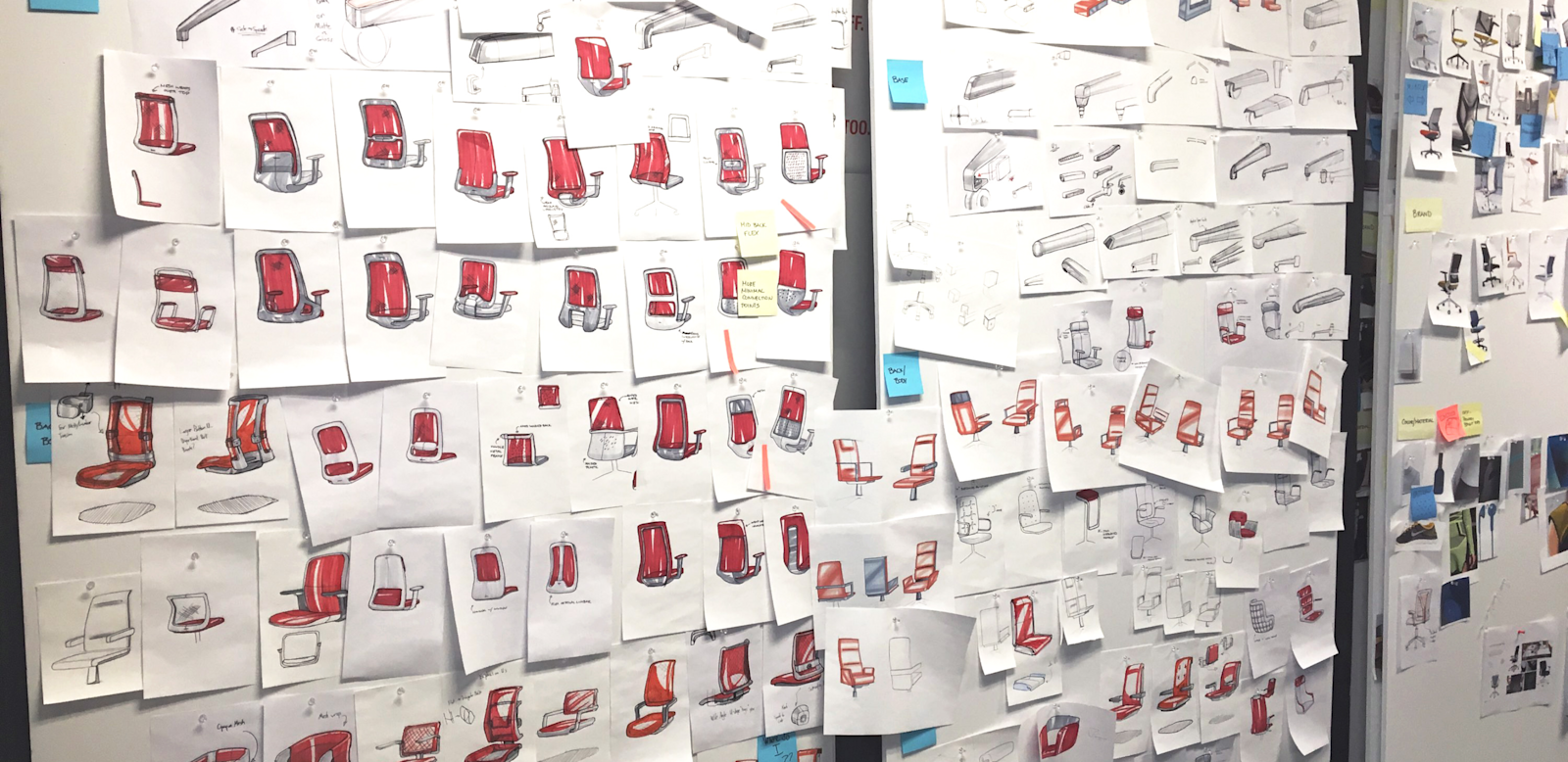
PERSONAL LEARNINGS
I gained experience thinking deeply about how brand messaging is manifested intentionally into physical products to create customer experiences thorough all touch-points of the brand.
The existing furniture category was a multi-billion dollar category. There were many people invested in the project and I learned to manage the plethora of differing opinions, emotions, and many hesitations that threatened its success.
I spent time at our manufacturing sites in China learning about all of the realities that bring a concept from idea to execution.